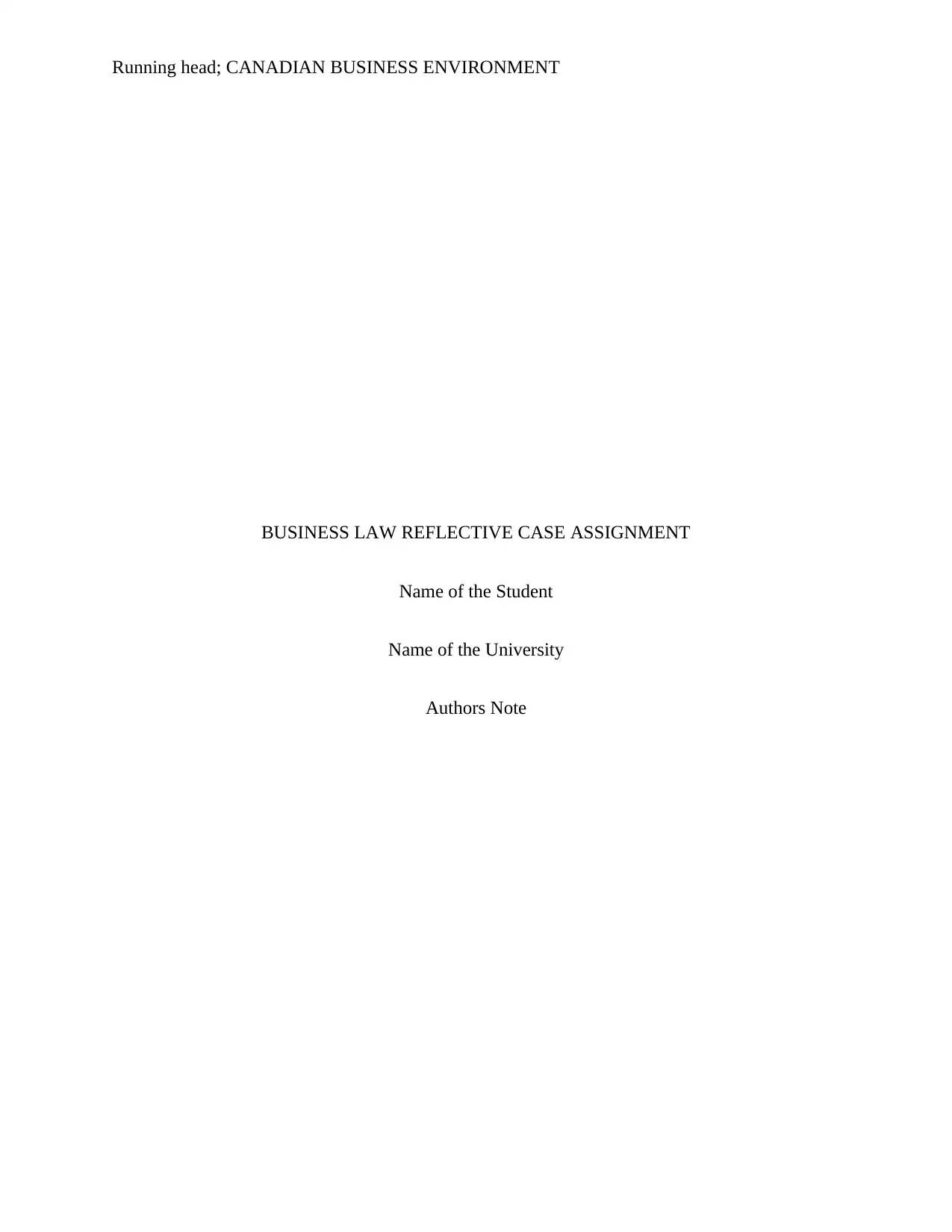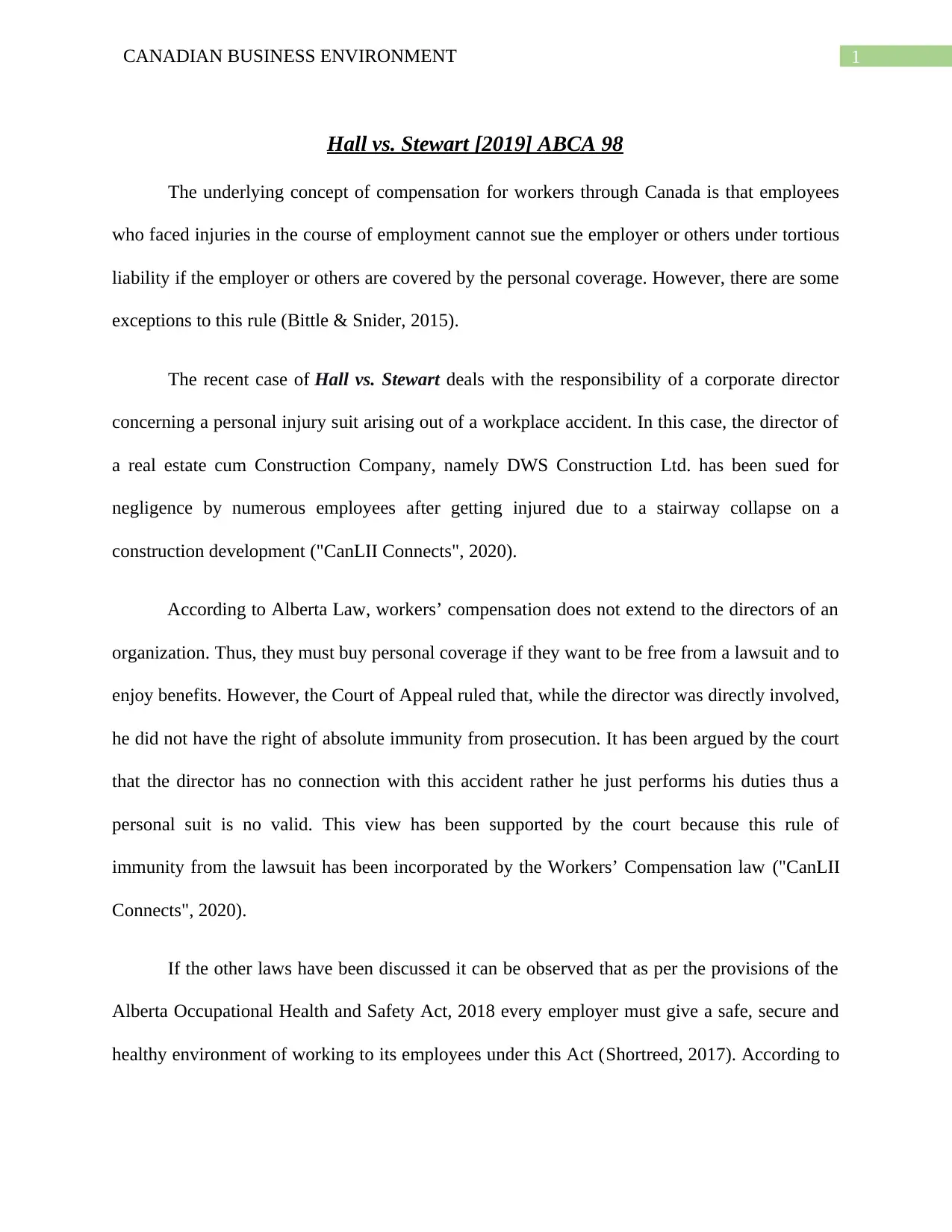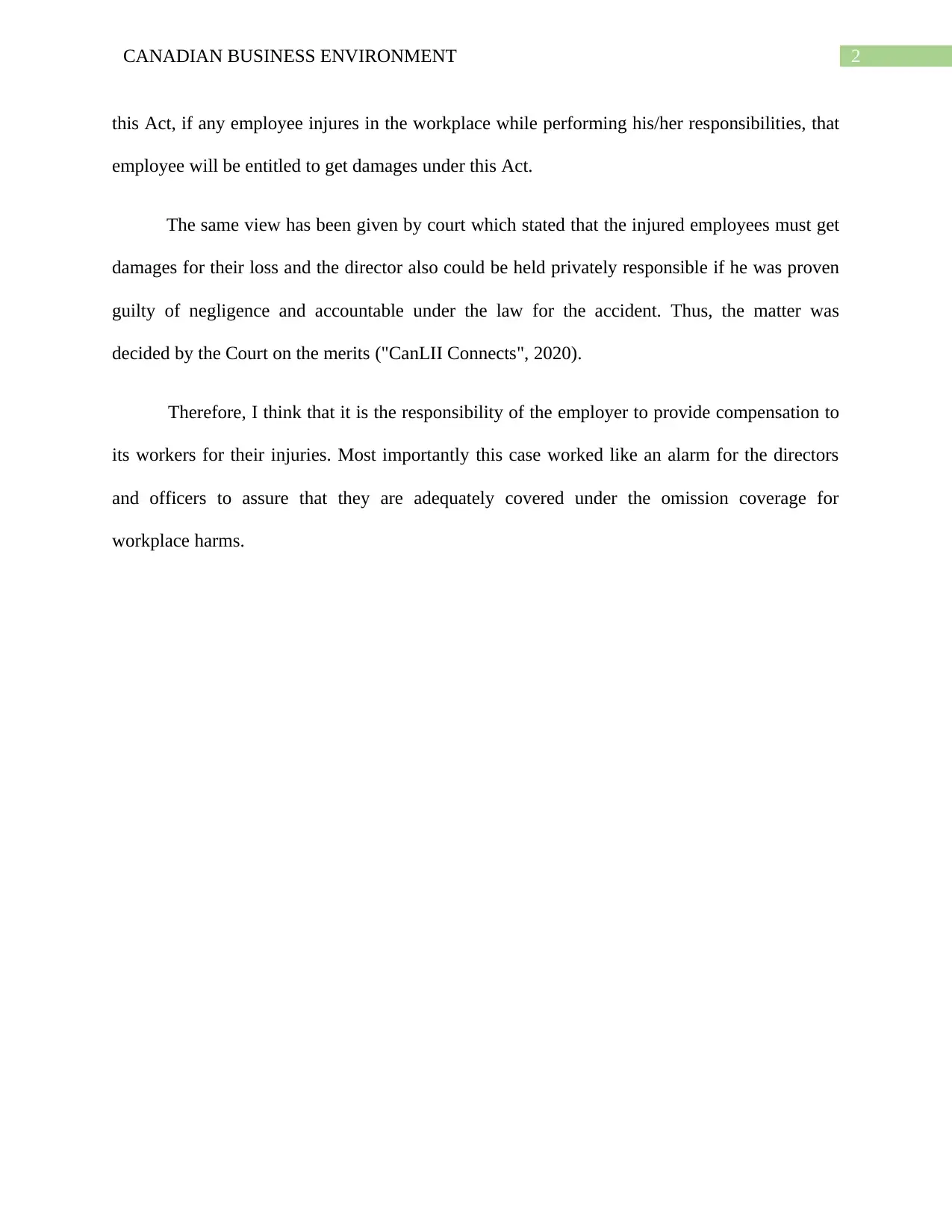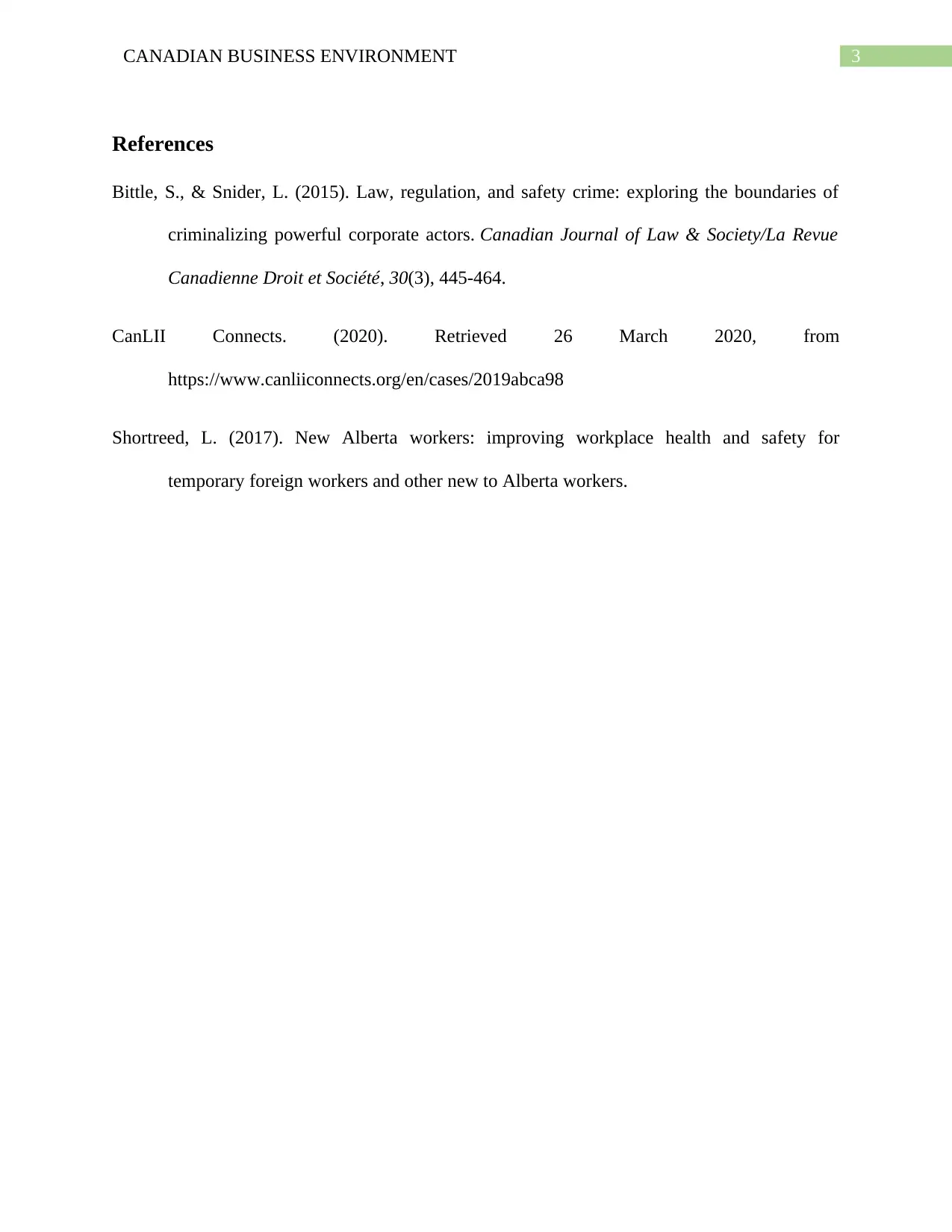Canadian Business Environment: Business Law Reflective Case Assignment
VerifiedAdded on 2022/09/01
|4
|589
|23
Case Study
AI Summary
This case study analyzes the 'Hall vs. Stewart' case, focusing on the liability of a corporate director in a workplace accident within the Canadian business environment. The assignment explores the legal principles of workers' compensation, corporate director responsibilities, and the Alberta Occupational Health and Safety Act. The case highlights the exceptions to the rule where employees cannot sue employers, particularly when employers have personal coverage. The court's ruling emphasizes that the director, although involved, did not have absolute immunity from prosecution, and the injured employees were entitled to damages. This case serves as a crucial reminder for directors to ensure adequate coverage for workplace incidents. The assignment includes an analysis of relevant legislation and a reflection on the employer's responsibility to provide a safe working environment and compensate injured employees.
1 out of 4







![[object Object]](/_next/static/media/star-bottom.7253800d.svg)